Pheasant Tail - Tied by Charlie Craven
Hook: TMC 100SP-BL #14-20, TMC 100 #22 and smaller - https://charliesflyboxinc.com/product/tmc-100sp-bl-100pk/
Thread: 8/0 Rusty Brown down to an eighteen, 10/0 rusty Brown for 20 and smaller - https://charliesflyboxinc.com/product/8-0-uni-thread/
Tail: Ringneck Pheasant Tail Fibers - https://charliesflyboxinc.com/product/ringneck-pheasant-tail-pairs/
Rib: Fine Copper Wire - https://charliesflyboxinc.com/product/utc-wire-small/
Abdomen: Ringneck Pheasant Tail Fibers - https://charliesflyboxinc.com/product/ringneck-pheasant-tail-pairs/
Wingcase/Legs: Ringneck Pheasant Tail Fibers - https://charliesflyboxinc.com/product/ringneck-pheasant-tail-pairs/
Thorax: Peacock Herl from the eyed quill - https://charliesflyboxinc.com/product/peacock-eyes/
The Pheasant Tail is the quintessential mayfly nymph pattern. The dark brown color and slender profile create a highly realistic mayfly imitation. Although it can be tied in larger sizes, I prefer this fly in sizes 16 through 24 because smaller sized Pheasant Tails match blue wing olive and pale morning dun nymphs. For bigger mayflies, I lean toward the Hare’s Ear as it lends itself better to large sizes.
I have perhaps tied as many Pheasant Tails in my life as I have any other pattern and have streamlined the process over the years. I like to keep this fly slender. Most books show the Pheasant Tail using three or four separate bunches of fibers to form the tail, body, wingcase, and legs. This creates too much bulk on the hook and makes a simple fly more complicated than it needs to be. I use the same four fibers of pheasant tail for all of these parts. My method of tying the Pheasant Tail makes the pattern simple to tie and more slender, to more closely match the natural.
Proper selection of both the pheasant tail fibers and the peacock herl used in this pattern is critical.
Not all pheasant tail feathers are created equal. Some have very bushy fibers, like oversized hackle, that create too much bulk on the hook. Some have thin, short fibers that work beautifully for small flies. The feathers that these fibers come from tend to look ratty and ugly, not full and bushy like the pretty feathers you’d like to put in a hat. The ratty ones are the feathers you want to select for your Pheasant Tails. I didn’t say broken, chewed or bent, just thin, as though they came from a bird that didn’t do too well last winter.
As for the peacock, I use only the herls that extend directly out from the very tip of the eyed quill. These herls are smaller and finer than the stuff that is below the eye and look nice on a small fly while keeping the thorax in proportion to the rest of the fly.
I pull only one fiber of pheasant tailback along each side of the thorax to imitate legs. Most tiers pull back two per side but, again, it’s too much bulk on a slender fly.
Don’t forget the color options for this pattern. While natural pheasant tail fibers make a beautiful fly, black, olive and red are effective too.
The Pheasant Tail can be fished in a variety of ways. I fish it as a nymph on the stream bottom with a split shot on the leader.
PLEASE SUBSCRIBE!! - http://bit.ly/2FhqqtL
CONNECT WITH US ONLINE:
Visit Our Website: http://www.intheriffle.com
Follow Us On Facebook: http://www.facebook.com/InTheRiffle
Follow Us On Instagram: http://instagram.com/intheriffle/#
Follow Us On Twitter: http://twitter.com/InTheRiffle
-
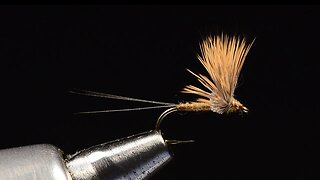 10:55
10:55
InTheRiffle
4 years agoComparadun Fly Tying - Tied by Charlie Craven
7 -
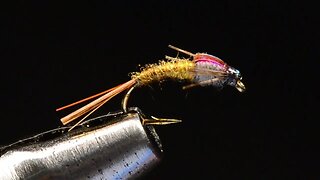 10:13
10:13
InTheRiffle
4 years agoBarr Emerger - Tied by Charlie Craven
13 -
 2:20
2:20
KillerFuzz
1 year ago#8 Clouser Minnow Fly Tying
57 -
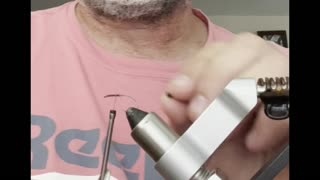 2:20
2:20
KillerFuzz
1 year ago#8 Clouser Minnow Fly Tying
55 -
 25:49
25:49
Dressed Irons
1 year ago $0.01 earnedTying The Golden Pheasant - Dressed Irons
76 -
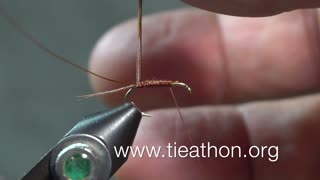 7:01
7:01
Andy's Flies
4 months agoPheasant Tail Soft Hackle
8 -
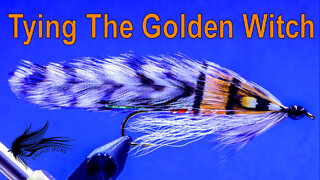 29:16
29:16
Dressed Irons
2 years agoTying Carrie Stevens Golden Witch - Dressed Irons
41 -
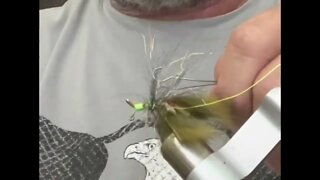 3:12
3:12
KillerFuzz
1 year ago#8 Jig Hook Cray Tail Craw Dad
89 -
 2:57
2:57
KillerFuzz
1 year agoFroggy Popper on #6 hook fly tying
172 -
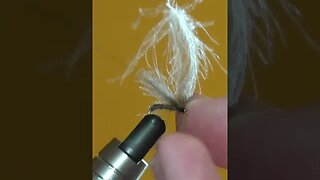 1:02
1:02
Marina Kropec (multi species fishing)
9 months agoCDC Caddis, simple dry fly tying
6